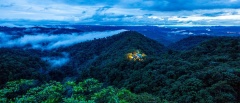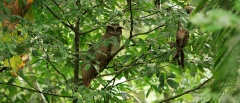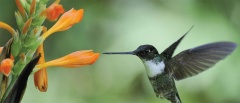The Cloud Forest
A secretive yet wondrous ecosystem...
First things first - what’s the difference between a Cloud forest and a Rain forest? We’re not witty enough to offer a punchline, so let’s stick to the science! The key difference is elevation. Cloud forests are found on higher ground, typically between 1,800 – 3,500m. Consequently, they are much less humid, offering a cooler climate that results in the mesmerizing mist layers that shroud the forest for at least a part of each day. The staggered topography of cloud forest on the slopes of the Andes also allows more sunlight to penetrate through the foliage – allowing an astonishing range of plant life and wildlife to thrive.
Whilst only an esoteric few may be impressed with the array of moss and lichens that coat the forest, it is hard not to be wowed by the abundance of colourful orchids and heliconia. Indeed, Ecuador has more species of orchid than any other country (estimated at 3,500!). Furthermore, the Cloud forest is bursting with over 500 species of bird, including the Andean Cock-of –the-Rock, Quetzal, Toucans, a plethora of Hummingbird species and the wonderfully name Long-wattled Umbrella-bird...to name just a few! A combination of luck and patience may gift a sighting of the Could Forest’s four-legged residents, such as the Spectacled bear, Tapir, Ocelot or Puma.
Ecuador’s Cloud forests are located north-east of the capital, Quito; and can be reached by road in around 2 to 4 hours (depending on exactly where you are coming from/going to). There are several ways and places to experience this beautiful part of the country. The village of Mindo can no longer be tagged with the ‘hidden gem’ or ‘little-known’ prefix; but it remains an option for bird lovers who wish to base themselves somewhere for a few days. However, it has become increasingly busy over the past few years and is a hot-spot for Quiteños (Quito residents) to escape from city-life.
We suggest, in order to truly make the most of this incredible habitat, retreat into the thick of the Cloud forest and stay for at least 3 nights. Fortunately, the government has limited the number of dwellings within the reserves, so the pristine condition has been well maintained – with science and preservation being paramount. The Mashpi reserve, Bellavista reserve and Maquipucuna reserve all offer accommodation, with varying degrees of comfort. See below for our recommendations.





